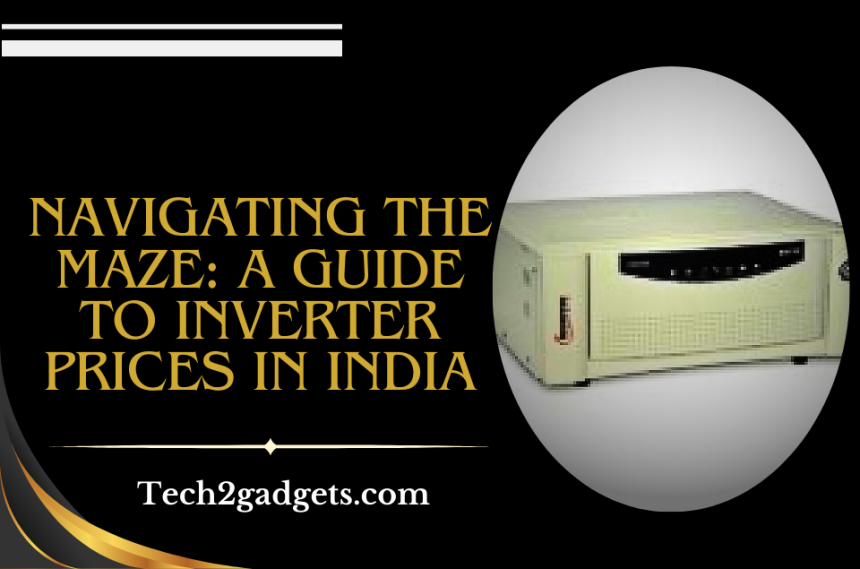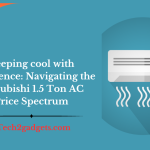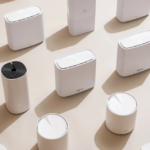Introduction:
In recent years, the demand for power backup solutions has soared in India due to more frequent blackouts and people’s increasing dependency on electric devices. In this environment, inverters play a vital role during blackouts to ensure continuous power supply. With the growing market for inverters In India, it becomes important to know what are those things that affect prices of inverter. This article seeks to investigate the phenomena of inverter prices in India, factors that drive these variations as well providing suggestions for buyers.
Understanding the Basics
So before delving into the intricacies of inverter prices, it is important to know how they work. An inverter is an electronic device that takes direct current from a battery or solar panel and converts it to alternating current, powering the household appliances. Regarding the basic functionality, it is same with different models but various specifications features technologies are differing from each other and that makes to cost vary wildly in the market.
Factors Influencing Inverter Prices
- Capacity and Power Output:
an inverter’s price largely depends on its capacity, which is specified either in kilovolt-amps (kVA) or kW. More expensive are higher capacity inverters, which can handle more appliances during a power failure. It is essential to determine the power needs of your home or business before determining an appropriate size.
- Waveform Type:
Inverters emit either pure sine wave or modified sine wave. Pure sine wave inverters cost more but they have an unblemished and steady power supply which is suitable for sensitive electronic gadgets. Modified sine wave inverters are cheaper but some appliances may not work with them.
- Battery Type and Compatibility:
Inverters can work with various types of batteries, be it lead-acid or lithium-ion. Overall cost depends significantly on the choice of battery. Also, some inverters are tailored to particular types of batteries and compatibility is somewhat an influencer on prices.
- Inverter Type:
There are two main types of inverters: standalone inverters and solar inverters. Unlike the stand-alone inverters, which are designed to be used with batteries and the grid, a solar power system has an integrated solar inverter. The cost of solar inverters is generally higher as additional technology is required for the conversion from solar energy.
- Brand and Quality:
The reputation and brand value of the manufacturer may impact inverter prices. In general, established brands with proved history of producing high quality and long lasting inverters are sold at higher prices. When using budget options, it is imperative to find a balance between cost and quality when seeking for durable and efficient power backup.
- Features and Technology:
These advanced features, such as LCD displays and remote monitoring, along with overload protection make inverters more expensive. The cost of inverters equipped with the latest technology such as smart connectivity or grid-tie facilities may also be premium.
- Government Subsidies and Incentives:
In some situations, prices can be affected by government subsidies and incentives related to renewable energy products such as solar inverters. As a consumer, they should be aware of any programs currently running which could help them in buying an inverter by reducing its overall cost.
Type of Inverter:
- Square Wave Inverters: The least price, generating a square wave output appropriate for basic tools such as fans and lights. However, they can ruin sensitive electronics. They are priced between ₹2,500 and ₹10,000 respectively for different capacities.
- Modified Sine Wave Inverters: Provide a step beyond square wave and pretend sine some way. They operate a much broader range of appliances although still present some risk to the sensitive electronics. ₹5,000 to ₹15,000 is the price range.
- Pure Sine Wave Inverters: Produce the cleanest, near mains AC output-making them suitable for all applications like sensitive electronics. They are the best but also most expensive; their price starts at about ₹10,000 and can go upto ₹50,000 depending upon their capacity.
Price Trends and Comparisons:
Online vs Offline: Reduced overheads associated with online platforms may reduce prices, but lack the experience of touch-and-feel and personalized advice. Offline shops commonly cover installations and post-purchase services, but they may raise the prices.
Seasonal variations: Demand for inverters is also high during summer, which may push up their prices. Consider making purchases during low seasons to secure better deals.
Brand offers and discounts: Keep an eye out for seasonal discounts, promotional offers or bundled deals with batteries as they can result in significant savings.
Making a Smart Choice:
Don’t only pursue the lowest price. Prioritize your needs and consider factors like:
- Your power usage: Determine what capacity is needed based on the patterns of you appliance usage.
- Type of appliances: Finally, choose a pure sine wave inverter for sensitive electronics equipment.
- Budget: Set realistic budget and research options within that range.
- Brand and warranty: Look for a brand with good reputation and warranty to assure you of their durability.
- Additional features: Decide which features are critical and don’t overpay for what is optional.
Remember, inverters are a tool for your comfort and productivity. By being aware of the determinants for their price and making wise decisions, you can go through inverter market finding not only suitable one but affordable at once.
Top Picks:
To help you navigate the market, here’s a list of the top 10 inverters, along with their key features and estimated prices:
Luminous Cruze Pure Sine Wave Inverter (12V, 2000VA):
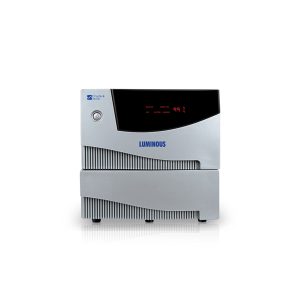
_image source :.amazon.in
- Price: ₹25,495
- Type: Pure Sine Wave
- Capacity: 2000 VA
- Features: 12- 24 V DC power input, LCD display,, auto cut off control, overload protection and solar charging.
- Best for: Homes with high appliance usage, sensitive electronics and such.
Luminous Zelio+ 1100 Pure Sine Wave Inverter (12V, 1100VA):
- Price: ₹7,200
- Type: Pure Sine Wave
- Capacity: 1100 VA
- Features: Compact design, digital display screen, auto shut-off feature and overloading safety control and mobile charging socket.
- Best for: Basic appliances, small offices and apartments.
Microtek SEBz1100 Pure Sine Wave Inverter (12V, 1100VA):
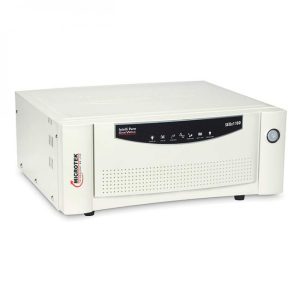
_image source : batteryboss.in
- Price: ₹8,500
- Type: Pure Sine Wave
- Capacity: 1100 VA
- Features: High efficiency, digital display; auto cut-off and overload protection function with mobile charging port.
- Best for: Moderate appliance usage and sensitive electronic homes.
Exide GQP 12V 1050VA Pure Sine Wave Inverter:
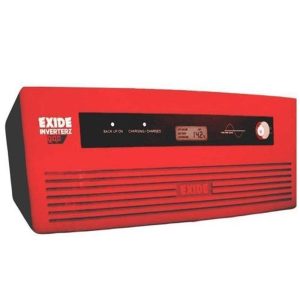
_image source : indiamart.com
- Price: ₹8,999
- Type: Pure Sine Wave
- Capacity: 1050 VA
- Features: Rugged structure with long backup time, auto-shutoff feature and overload protection highlight the variants mobile charging port.
- Best for: Places in rural areas where there are long power cuts and heavy appliance usage.
Luminous Eco Watt Neo 1050 Square Wave Inverter (12V, 1050VA):
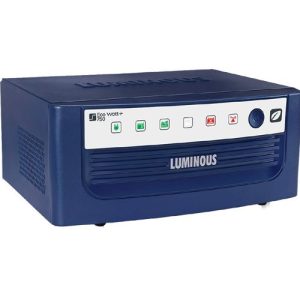
_image source : m.indiamart.com
- Price: ₹4,999
- Type: Square Wave
- Capacity: 1050 VA
- Features: Price range, space-saving design, automatic shut off feature and protective mechanism to prevent it from going too high on power.
- Best for: The basic uses of these appliances are for budget-conscious buyers.
Microtek EB700 Square Wave Inverter (12V, 700VA):
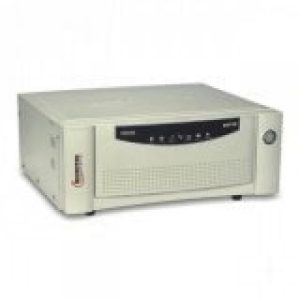
_image source : moxikart.com
- Price: ₹3,950
- Type: Square Wave
- Capacity: 700 VA
- Features: Affordable, small , suitable for general lighting and fans.
- Best for: Occasional power cuts, temporary use.
V-Guard Smart Pro 1200 S Pure Sine Wave Inverter (12V, 1200VA):
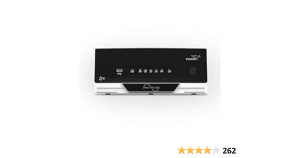
_image source : amazon.in
- Price: ₹9,499
- Type: Pure Sine Wave
- Capacity: 1200 VA
- Features: 1 Digital display, auto cut off
- Best for: Homes with moderate use of appliances, good value for money.
Su Kam Falcon Eco 1000 Pure Sine Wave Inverter (12V, 1000VA):
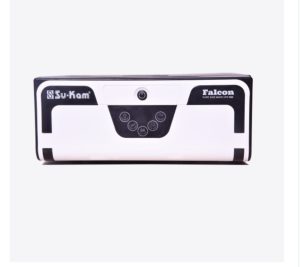
_image source : amazon.in
- Price: ₹8,499
- Type: Pure Sine Wave
- Capacity: 1000 VA
- Features: Compact and Lightweight, Dual battery compatibility, Silent operation, Auto cutoff, LED indicator.
- Ideal for: Moderate use homes, compact designed.
Faqs:
What decides the cost of an inverter in India?
A1: There are various factors that influence the prices of inverters in India including capacity, waveform type, battery compatibility; brand reputation features and technology. Higher capacities, pure sine wave output and advanced features with specific batteries or solar systems can result in higher costs.
How do I establish the proper size for my inverter?
A2: Determine your power needs by identifying the appliances you want to be able to run during an outage. Determine the total power consumption and select an inverter of a slight capacity more than the calculated value to ensure proper backup.
What is the difference between pure sine wave inverters and modified sort.
A3: Pure sine wave inverters deliver a cleaner and stable power supply making them suitable for use by sensitive electronic devices.
there any government subsidy or incentives when purchasing inverters in India?
A4: In some instances prices are influenced by Government subsidies and incentives awarded for renewable energy products such as solar inverters. To lower the cost of procuring an inverter, it would be good to stay updated on current programs.
What type of battery should be used for my inverter?
A5: Inverters can work with different batteries, including lead-acid batteries and lithium ones. The battery type can affect the overall cost, lifespan, performance. Make sure the chosen inverter works with your battery type that you plan to use.
Is it possible to use an inverter for solar power backup?
A6: There are solar inverters designed to work with power systems that utilizes the sun. These inverters have technology that can convert solar energy into usable electricity for users to benefit from the use of renewable source power backup.
What features should i priortize while choosing an inverter?
A7: LCD screens, remote monitoring, overload protection and smart connectivity are some of the features that would make your inverter more convenient and efficient. Make a list of features according to your most relevant need and budget limitations.
Balancing brand reputation and price while acquiring an inverter?
A8: Brands established with a reputation of reliability usually sell at high prices. On the other hand, it is imperative you ensure that there’s a balance between brand value and budget to get an inverter which was good for your needs.
Are Indian inverter price segments different?
A9: It can be classified into entry-level price of inverters (Rs. 2,000 – Rs. 5,000), mid-range (Rs. 5,000 – Rs. The company operates in three segments namely low-end , middle segment ( Rs. 6,001 – Rs 15,000). Each segment provides different capacities and features to address various consumer requirements.
What can be an effective strategy to remain updated about market trends and government initiatives on inverters?
A10: Informed on the newest undertakings, you will be able to make reasonable options when buying an inverter.
Conclusion:
Comprehending the inverter pricing environment in India necessitates a comprehensive comprehension of the variables impacting the industry. When buying an inverter, you may make an informed choice by determining your exact demands, comprehending the features and technologies offered, and taking financial limits into account. Keeping abreast of market developments and governmental efforts will enable consumers to make dependable and cost-effective investments in inverter solutions as the power backup sector develops.
See also :Choosing the Right 1 Ton Air Conditioner for Your Comfort

